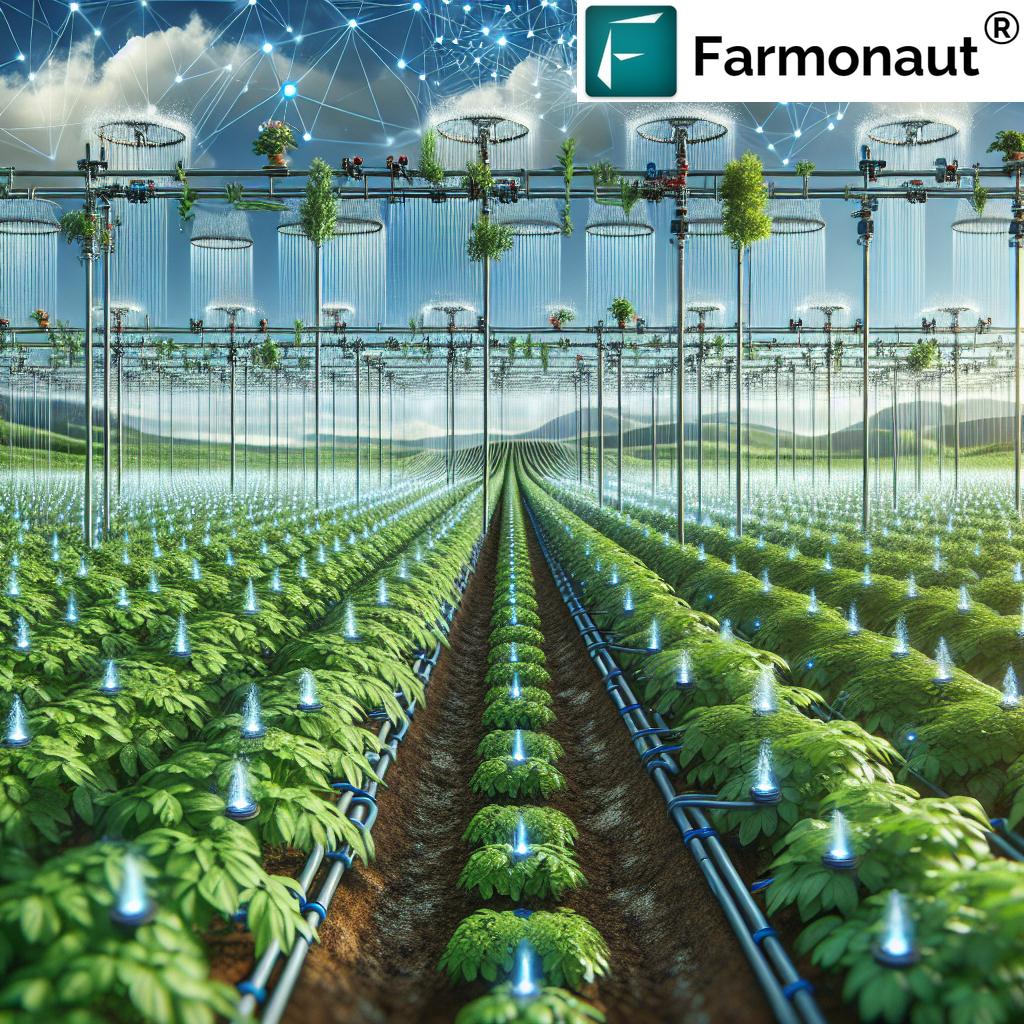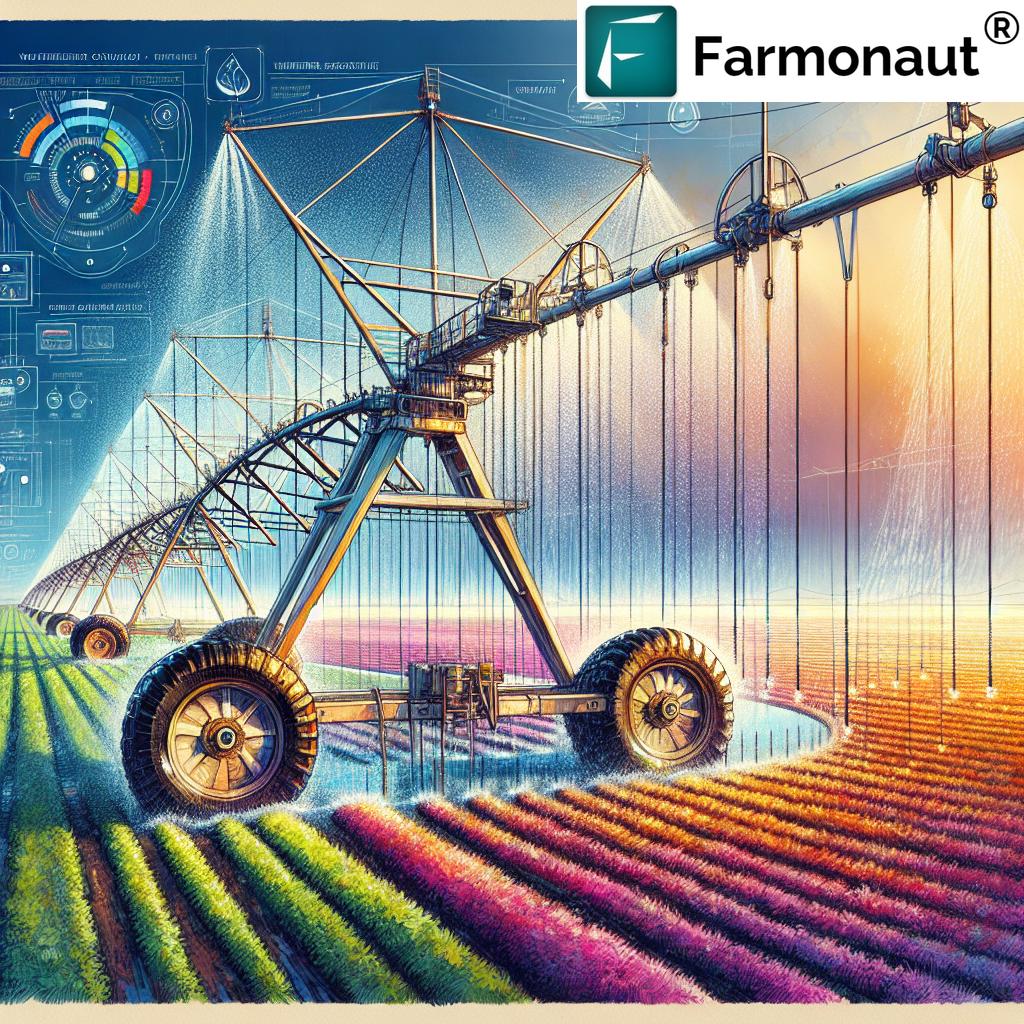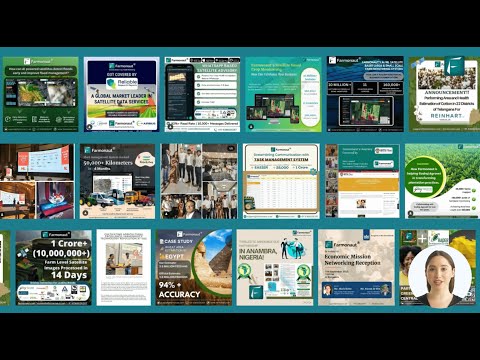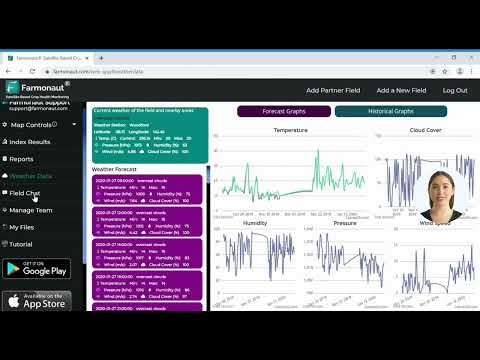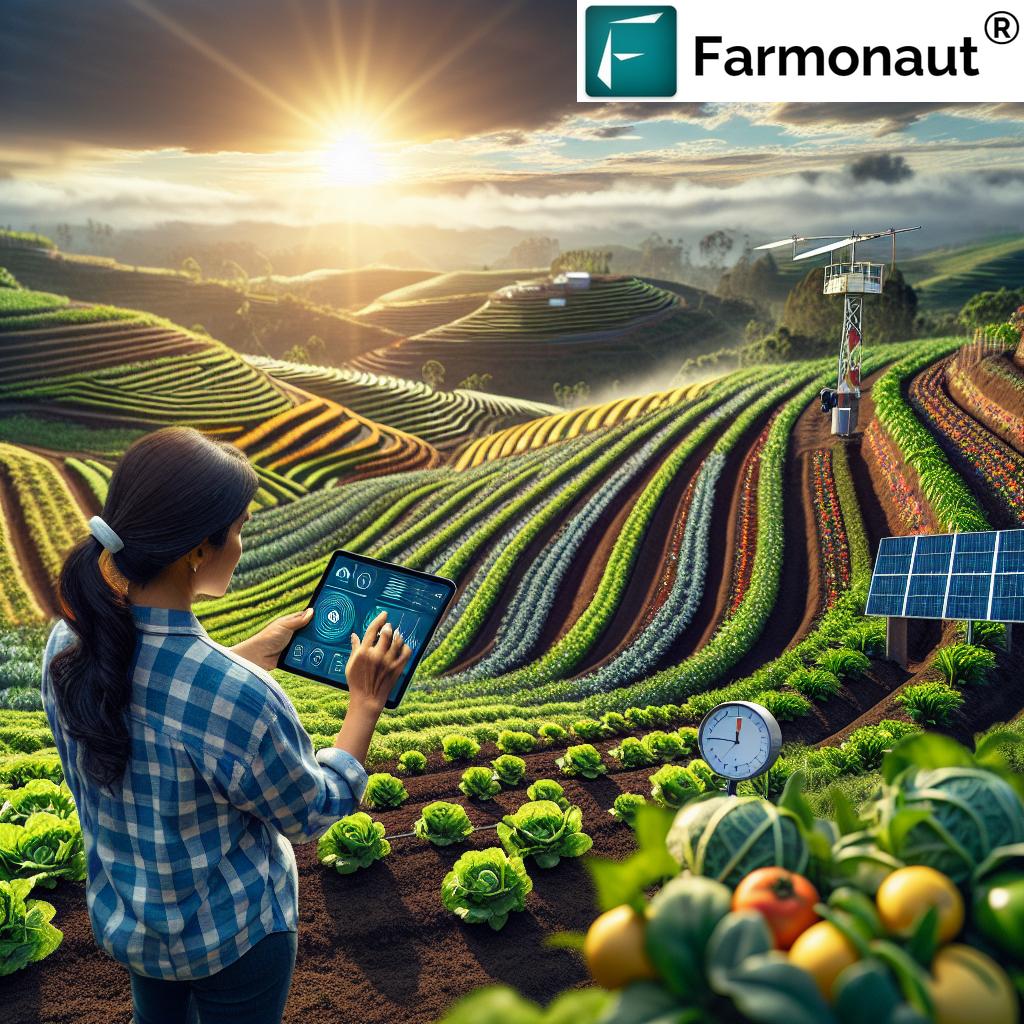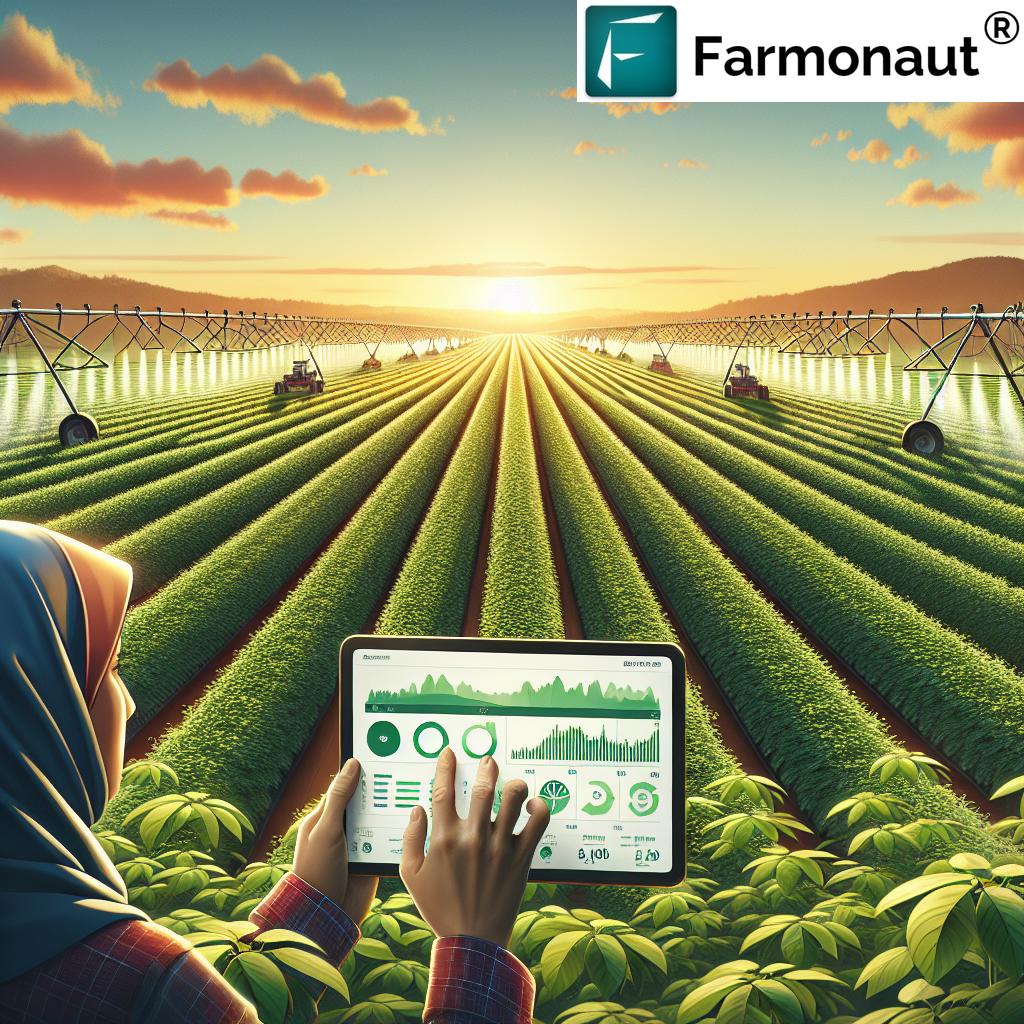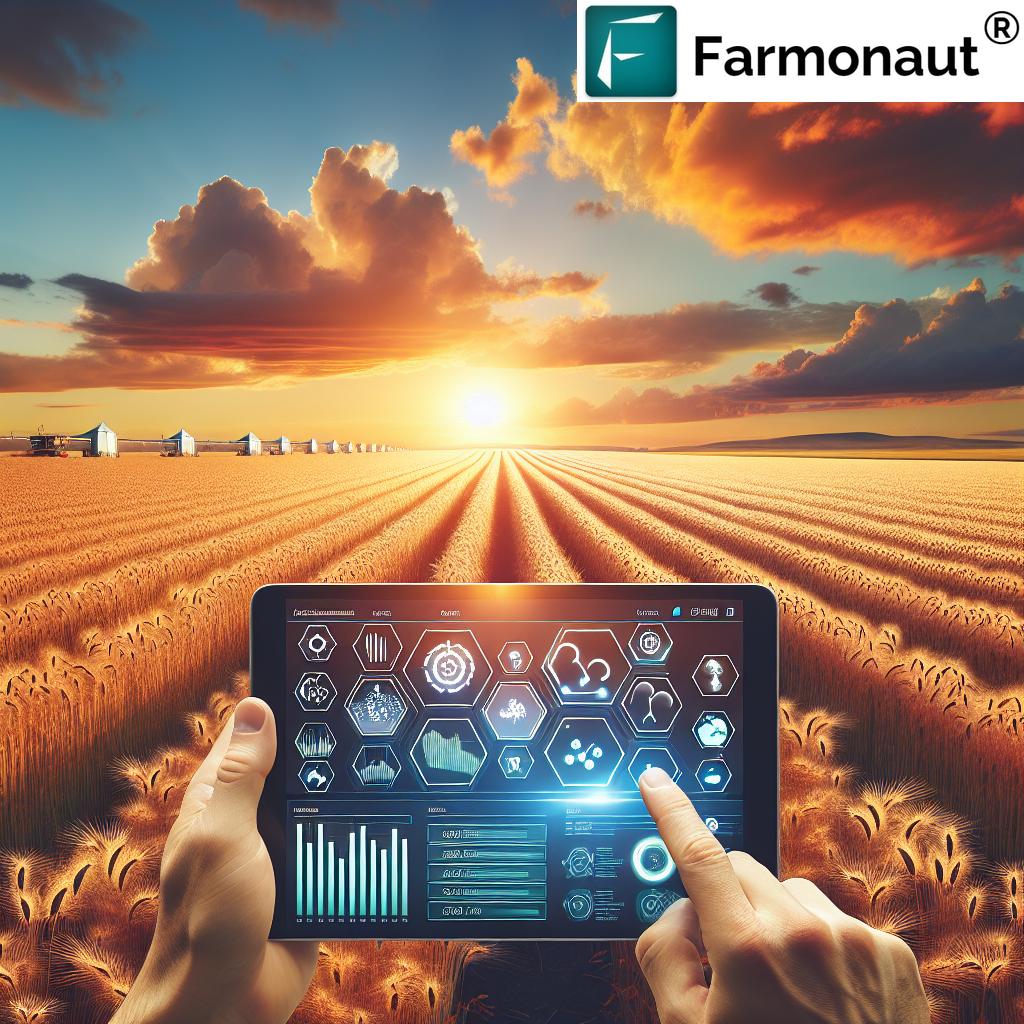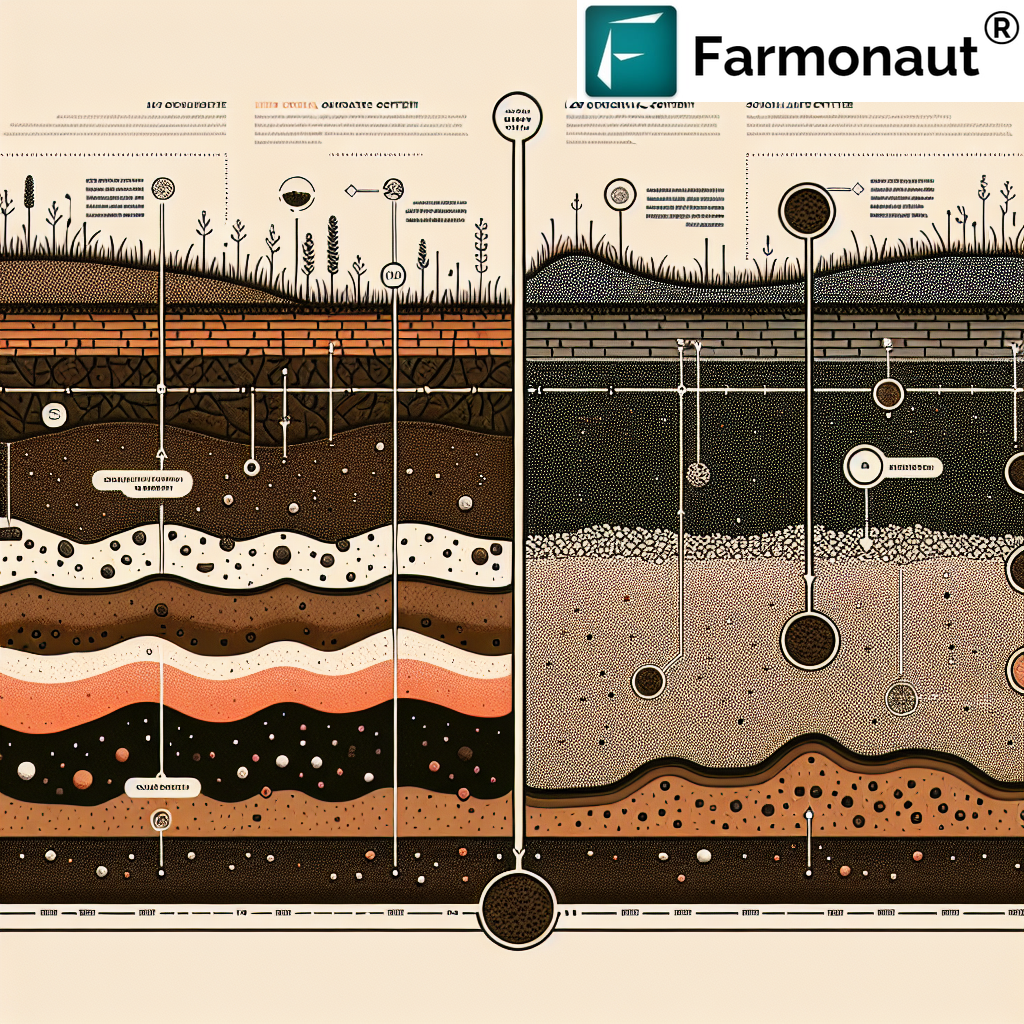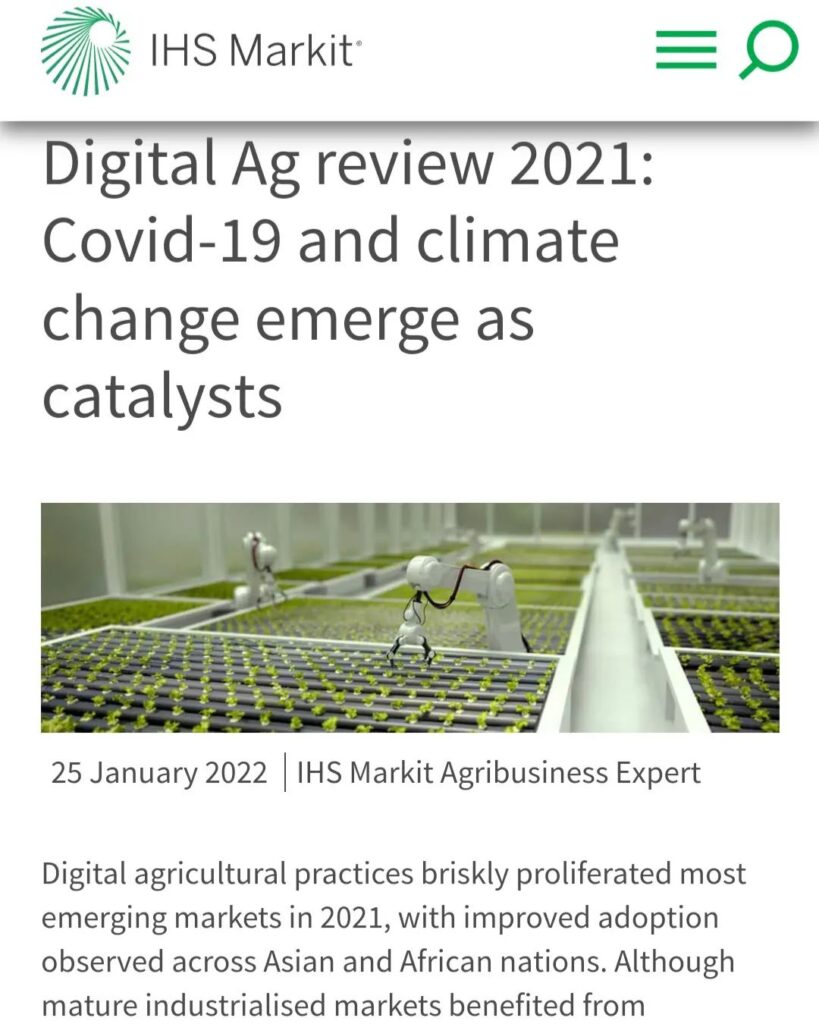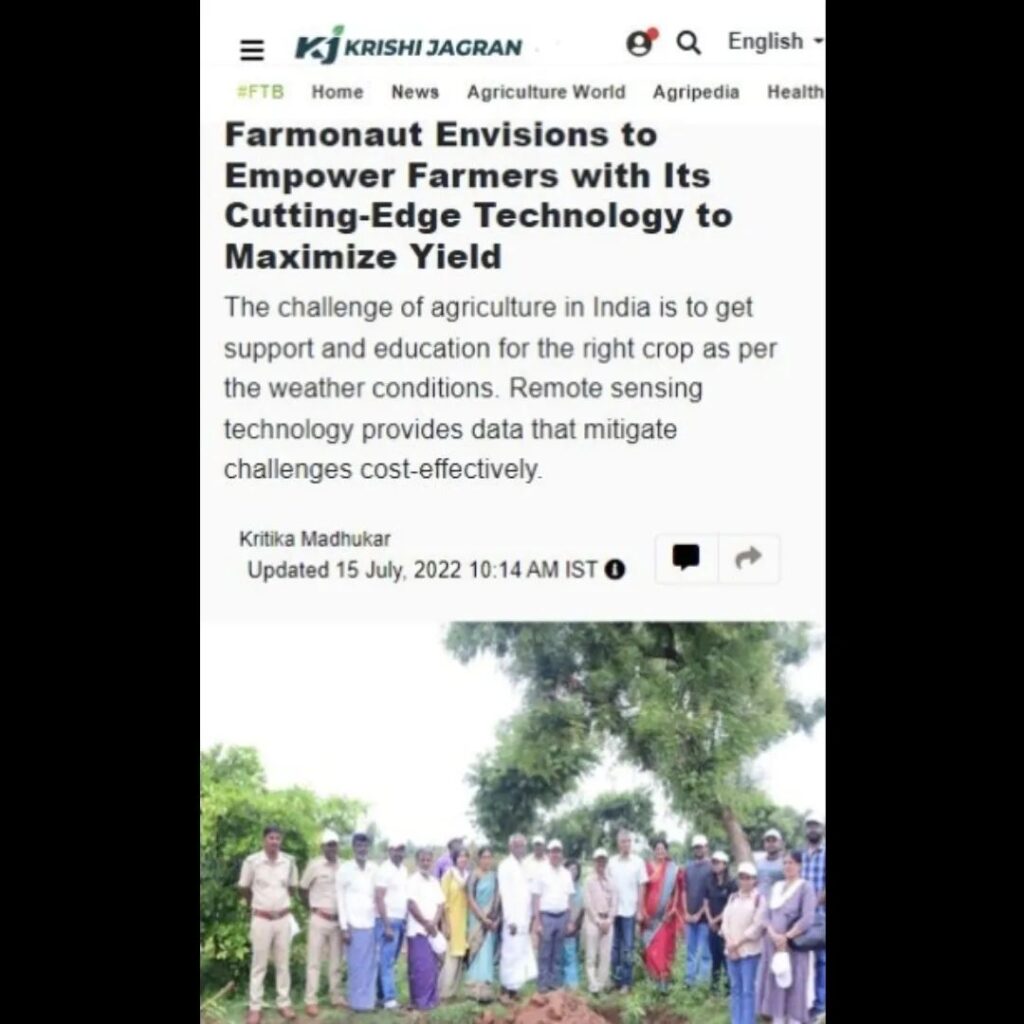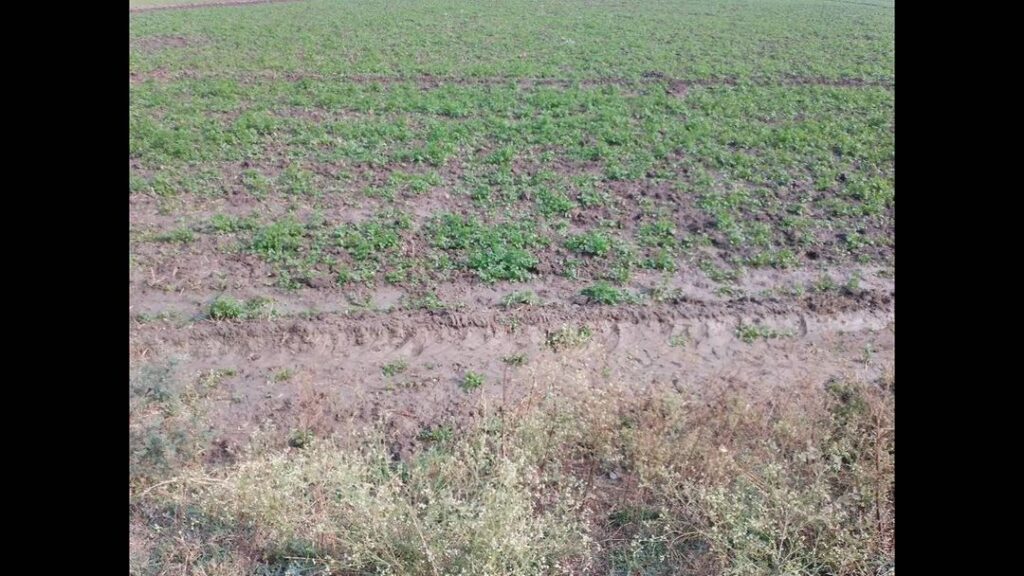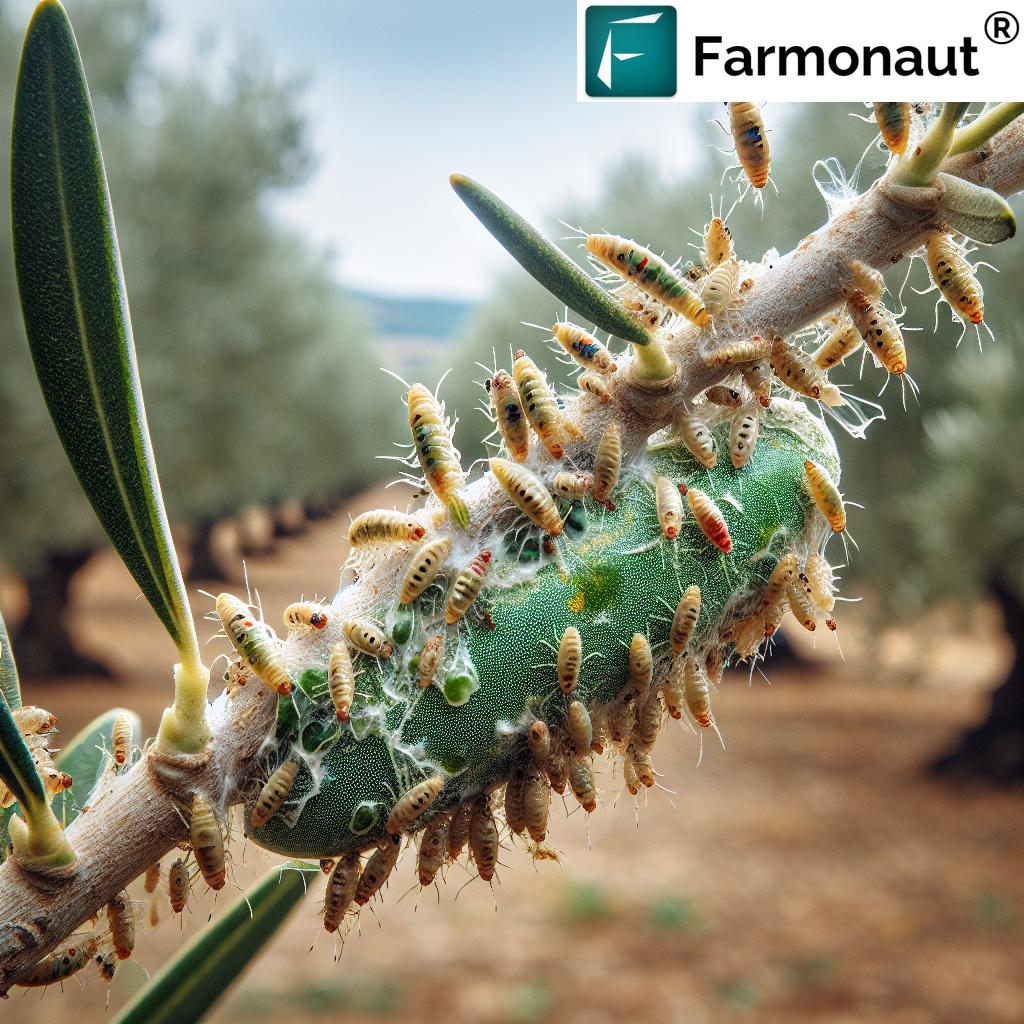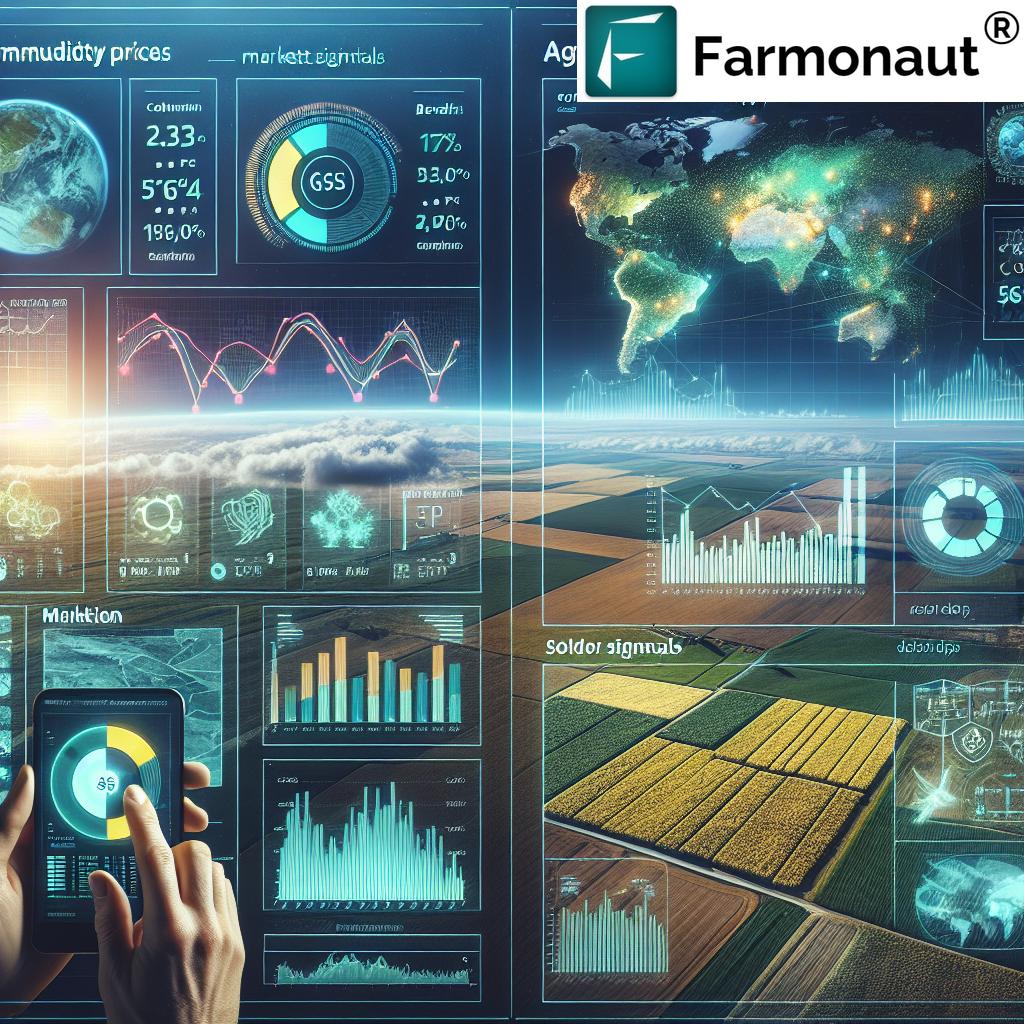Automated Irrigation System for Farmers: Boost Yields Fast!
Table of Contents
- Introduction: Revolutionizing Farming with Automated Irrigation Systems
- How Do Automated Irrigation Systems Work?
- Types of Automated Irrigation Systems
- Comparative Benefits: Traditional vs. Automated Irrigation Systems
- Core Benefits of Automated Irrigation Systems in Agriculture
- Technology & Innovation: The Engine Behind Smart Irrigation
- How Farmonaut Enhances Precision and Sustainability in Farming
- Challenges and Considerations in Adopting Automated Irrigation
- The Future of Automated Irrigation Systems
- Frequently Asked Questions
- Conclusion
“Automated irrigation systems can increase crop yields by up to 30% compared to traditional methods.”
Introduction: Revolutionizing Farming with Automated Irrigation Systems
In the age of precision agriculture, automated irrigation systems are unleashing an unprecedented wave of efficiency, sustainability, and productivity for farmers worldwide. As stewards of the land, we continually seek reliable solutions for water conservation, increased crop yields, labor efficiency, and environmental sustainability. Thanks to emerging smart technologies, automated irrigation systems are reshaping modern farming practices by delivering water efficiently and precisely where it’s needed—boosting both profitability and resilience.
Throughout this comprehensive guide, we’ll explore how the latest smart irrigation technology addresses critical issues such as water scarcity, labor shortages, and environmental sustainability in farming. We’ll unravel the types of irrigation systems, discuss their core benefits, dive deep into the technology driving these changes, and showcase the transformative support of platforms like Farmonaut—a world leader in satellite-based crop management and advisory solutions.
Whether you are a seasoned grower or a stakeholder in sustainable agriculture, understanding and leveraging automated irrigation systems is now essential for optimal yield, reduced costs, and a brighter future for farming.
How Do Automated Irrigation Systems Work?
Let’s demystify how automated irrigation systems function at the core. Harnessing a network of sensors, valves, emitters, and advanced controls, these systems monitor environmental data—including soil moisture, weather conditions, and plant requirements. Automation ensures that water is delivered precisely when and where it’s needed. This targeted approach not only mitigates overwatering and runoff but also reduces evaporation, leading to impressive water efficiency and conservation.
- Smart sensors: Continuously measure soil moisture, temperature, and weather data to inform watering decisions.
- Automated controls: Adjust irrigation schedules in real time, optimizing water delivery and reducing unnecessary waste.
- Remote management: Modern systems enable farmers to control irrigation via dedicated apps and interfaces, responding instantly to changing conditions.
- Precision targeting: Water is applied only where, when, and in the amount required—promoting plant health and resource optimization.
By streamlining irrigation management, we support sustainable agriculture practices, reduce labor costs, and maximize the productivity of both small-scale and large agricultural operations.
Types of Automated Irrigation Systems
Let’s explore the leading types of automated irrigation systems utilized in modern agriculture for efficient water management and boost yields:
1. Drip Irrigation System
The drip irrigation system is widely acclaimed for its water-saving ability. This system delivers water directly to the plant roots via a network of small tubes, emitters, and valves. It minimizes evaporation and runoff, making it an ideal choice for water-scarce regions and for farmers looking to conserve resources while increasing productivity.
- Highly efficient for targeted irrigation and water conservation
- Reduces weed growth and optimizes fertilizer usage
- Mitigates the spread of foliar diseases by keeping foliage dry
Learn more about drip irrigation
2. Center-Pivot Irrigation
Center-pivot irrigation is common in large-scale farming operations. It consists of rotating sprinkler arms mounted on wheeled towers, irrigating crops in a sweeping circular pattern. The method covers extensive areas and ensures uniform water distribution—especially for monoculture fields and grains.
- Effective for covering large-scale farming land
- Offers automated, uniform distribution of water
- Integration with advanced sensors further boosts efficiency
Explore center-pivot irrigation
3. Subsurface Textile Irrigation (SSTI)
Subsurface Textile Irrigation (SSTI) involves laying geotextile materials beneath the soil surface to deliver water directly to the root zone. By keeping irrigation below the surface, SSTI reduces evaporation and runoff, which enhances water use efficiency and helps maintain consistent soil moisture for healthier plant growth.
- Ideal for regions with high evaporation
- Minimizes nutrient leaching
- Stabilizes soil structure and reduces weed competition
4. Smart Irrigation Systems
Smart irrigation systems integrate sensors, weather data, and automated controls to adjust irrigation schedules based on real-time conditions. These systems are fueled by AI and machine learning algorithms that ensure optimal water usage and efficient resource management.
- Continuously adapts to weather and soil data
- Enables real-time remote operation and monitoring
- Reduces water use in agriculture by preventing over-irrigation
Comparative Benefits: Traditional vs. Automated Irrigation Systems
To appreciate the revolution, let’s compare traditional irrigation methods with modern automated irrigation systems using real industry data. The following table lays out the estimated differences across key performance indicators for efficiency, yield, labor, and environmental impact:
| Irrigation Method | Estimated Water Usage Reduction (%) | Estimated Yield Increase (%) | Labor Savings (%) | CO₂ Emissions Reduction (%) |
|---|---|---|---|---|
| Flood Irrigation (Traditional) | 0-10% | 0-5% | 5-10% | 0-2% |
| Manual Drip Irrigation | 20-35% | 10-15% | 20-30% | 10-20% |
| Automated Smart Drip System | 60-70% | 20-30% | 50-70% | 35-45% |
| Sprinkler Automation (Center Pivot) | 40-55% | 12-21% | 40-55% | 25-32% |
As evidenced above, switching to automated irrigation systems offers substantial cost savings, higher yields, and a positive impact on environmental sustainability in farming.
“Smart irrigation technology reduces water usage by nearly 50% while maintaining optimal plant growth.”
Core Benefits of Automated Irrigation Systems in Agriculture
Automated irrigation systems bring transformative benefits to farming communities and the agricultural sector at large:
- Water Conservation: Automated systems can reduce water usage in agriculture by up to 70%. By delivering water precisely where and when needed, they address water scarcity and make farming more resilient.
- Increased Crop Yields: Consistent, precise watering leads to healthier plants, improved growth, and yield increases up to 30%. This benefit is fundamental for food security and profitable farming.
- Labor Efficiency: Automation reduces the need for manual intervention, freeing up farmers’ time. This is crucial for addressing labor shortages in the agricultural sector and focusing on other critical tasks.
- Cost Savings: While the initial investment may be significant, ongoing savings from reduced water and labor costs result in a quick return on investment. Efficient irrigation also minimizes excess input costs and waste.
- Environmental Sustainability: Smart systems reduce chemical runoff and overwatering, helping farmers contribute to eco-friendly, sustainable agriculture practices. Lower energy and water consumption also translate to reduced greenhouse gas emissions.
- Improved Resource Optimization: By using detailed data, we can optimize every drop of water and every farming input—helping to meet both economic and environmental goals.
These irrigation automation benefits underscore why automated systems are being adopted by top farmers and major agricultural operators.
Technology & Innovation: The Engine Behind Smart Irrigation
The surge in smart irrigation technology is powered by groundbreaking advances in sensors, satellite data, AI, and cloud-based platforms. Let’s break down the essential components:
Key Technologies at Work
- Sensor Networks: Devices monitor soil moisture, weather, and crop status—ensuring precise, real-time irrigation.
- Automated Valves and Emitters: React to data inputs and regulate water flow on demand, minimizing operator error and waste.
- Remote Control Systems: Cloud-linked platforms and smartphone apps (like Farmonaut’s) give farmers access and oversight from anywhere.
- Satellite & AI-Driven Decision Support: Farmonaut leverages satellite imagery and AI to monitor field health, providing farmers with recommendations for irrigation timing and fertilizer application. This moves us beyond automation to true data-driven precision farming.
With these advanced technologies, systems can utilize real-world data not just for day-to-day irrigation, but to support overall environmental sustainability in farming.
Explore Farmonaut’s live satellite-based crop health monitoring tools and API:
-
Farmonaut Satellite Crop Health Monitoring & App
: Monitor soil moisture, crop NDVI, and more on your browser or smartphone. -
For developers and agribusiness system integration, access Farmonaut’s advanced
API and
Developer Documentation.
How Farmonaut Enhances Precision and Sustainability in Farming
As a visionary leader in agricultural technology, Farmonaut is driven to make precision agriculture accessible and affordable globally. By integrating satellite imagery, AI, blockchain, and robust management tools within a unified platform, we’re enabling farmers and agribusinesses to revolutionize their irrigation and farm management with advanced technologies:
- Satellite-Based Crop Health Monitoring: Farmonaut leverages multispectral satellite images for real-time analysis of vegetation health (NDVI), soil moisture, and other vital crop metrics. This empowers farmers to make accurate choices regarding irrigation scheduling and optimize every drop for resource conservation.
- AI-Driven Farm Advisory (Jeevn): Our proprietary AI tool analyzes satellite and weather data to provide personalized, data-backed advice—improving irrigation efficiency, fertilizer application, and crop management.
-
Blockchain-Based Product Traceability: By integrating traceability, Farmonaut enables
transparent and secure farm-to-consumer tracking. This is vital for large agribusinesses seeking to maintain brand trust and supply chain integrity. -
Fleet and Resource Management: Farmonaut supports
efficient logistics and machinery oversight, helping reduce operational costs and environmental impacts. - Carbon Footprinting: We provide real-time carbon emission tracking and actionable insights to farmers and agribusinesses. Monitor and reduce your farm’s carbon footprint for compliance and true sustainability.
- Flexible, Scalable Solutions: Our subscription-based platform is accessible via Android, iOS, and web app, serving everyone from individual smallholders to large government programs. Add new features as your needs grow!
Maximize your returns: Farmonaut’s platform is designed to reduce costs, optimize resource usage, and increase yield, while also supporting environmental goals and sustainable agriculture practices.
Access crop loan and insurance verification through satellite data with enhanced fraud prevention (see Crop Loan and Insurance), and discover large field management solutions with Agro-Admin App.
Join the growing global community of forward-thinking farmers using Farmonaut to lead a data-driven, sustainable future in farming.
Challenges and Considerations in Adopting Automated Irrigation
Transitioning to automated irrigation brings numerous advantages, but it’s important to be aware of the practical challenges and considerations that come with adoption:
Cost and Investment
- High Initial Costs: The upfront investment in automated systems, including sensors, installation, and training, can be significant—especially for small or marginal farmers.
- Ongoing Subscription Fees: Many advanced systems require ongoing subscription fees for access to cloud-based analytics and support. These costs should be considered when budgeting.
Technical Requirements
- Technical Expertise: Automated systems require technical knowledge for installation, calibration, and ongoing maintenance. Training and support are crucial for a successful transition.
- Connectivity Issues: Smart irrigation systems depend on reliable internet connectivity and mobile networks for real-time monitoring and control—challenging in remote or underdeveloped regions.
Integration and Scaling
- Compatibility with Existing Infrastructure: Adapting automated technology to traditional farm layouts or legacy irrigation infrastructure can require significant retrofitting and adjustment.
- Scaling Beyond Pilot Programs: While results at small scales are promising, larger scale or multi-field farms need robust design and ongoing technical support for smooth operation.
By working with trusted technology vendors and platforms like Farmonaut, farmers can overcome these barriers with dedicated support, scalable integrations, and ongoing advisory services.
For a closer look at the pros and cons, check resources like orbit.eco’s deep-dive on automated irrigation systems.
The Future of Automated Irrigation Systems
The trajectory for automated irrigation systems is nothing short of inspiring. With ongoing advancements in AI, sensor technology, mobile connectivity, and satellite data, the tools for water-efficient farming will only become more affordable, user-friendly, and integrated into daily farm life.
- Lower Costs, Broader Access: As hardware and data service prices decline, even smallholder farmers will benefit from the same technology currently used in large-scale agribusiness.
- Farmer-Centric Platforms: New platforms (such as Farmonaut) are putting easy-to-use, customizable dashboards in every farmer’s hand—empowering direct decision-making and financial control.
- Integration with Climate-Smart Agriculture: Next-generation systems will combine irrigation, weather forecasting, soil health management, and low-carbon farming for truly holistic, sustainable agriculture practices.
- Growing Support for Sustainable Solutions: Public and private sector initiatives are increasingly supporting automation, with subsidies and financing tailored for new adoption.
As farmers, stakeholders, and innovators, the future calls on all of us to embrace irrigation automation benefits—for improved yield, environmental sustainability, and a food-secure planet.
Frequently Asked Questions
What is an automated irrigation system?
An automated irrigation system refers to any network of sensors, controls, and delivery mechanisms that uses real-time data and automation to provide precise, scheduled watering for crops—minimizing waste, reducing labor, and optimizing yield.
What are the main benefits of using automated irrigation systems?
Key benefits include:
– Up to 70% water conservation, drastically reducing waste and costs.
– Increased crop yields and healthier crops through consistent, optimized irrigation.
– Labor savings and efficiency, allowing farmers to redirect focus.
– Enhanced environmental sustainability by reducing runoff and emissions.
– Real-time, remote control over farm irrigation.
Is the initial investment in automation justified?
Yes. Although the setup can be significant, most farmers realize a positive return on investment via water savings, reduced input costs, minimized labor, and higher yields. Ongoing operational efficiencies provide long-term cost benefits.
What if I don’t have strong internet connectivity?
Reliable connectivity is important for many smart irrigation platforms. Some systems offer offline modes or GSM-based controls, but optimal performance requires strong, stable internet—something providers and governments are working to expand for farmers worldwide.
Can automated irrigation systems integrate with other farm management solutions?
Absolutely. Leading platforms—including Farmonaut—support integration with weather, soil health, advisory, and traceability modules. This ensures that your irrigation is only one part of a larger, smarter farming ecosystem.
Where do I find more details or support?
For more information and personalized advisory, access the Farmonaut platform via web, iOS, or Android, and explore their official website.
Conclusion: Powering a Sustainable Future with Automated Irrigation
Automated irrigation systems have emerged as a cornerstone technology for sustainable agriculture practices. By leveraging innovative technologies and smart data-driven decision-making, we as farmers can optimize water usage, increase crop yields, reduce operational costs, and lead the transition toward environmentally responsible food production.
While challenges like initial costs, technical requirements, and connectivity issues exist, the collective benefits and ongoing support from leading platforms like Farmonaut mean that the rewards far outweigh the obstacles. As adoption grows, so too will the economic, social, and environmental returns—creating a robust, resilient agricultural sector for generations to come.
From smart drip irrigation systems and center-pivot irrigation to advanced AI-driven solutions, now is the ideal time for all of us to embrace automation and shape a better, more sustainable future in farming.
Ready to revolutionize your farm with satellite-based insights, irrigation scheduling, and real-time AI advisory?
Get started with Farmonaut today!


